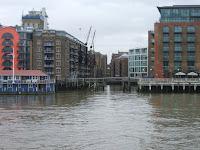
ABOUT THE AUTHOR:

Patti Lacy graduated from Baylor University in 1977 with a B.S. in education. She taught at Heartland Community College in Normal, Illinois, until she retired in 2006 to pursue writing full time. She has two grown children with her husband, Alan, and lives in Illinois.
ABOUT THE BOOK
 Far away from her Irish home, Mary Freeman begins to adapt to life in Midwest America, but family turmoil and her own haunting memories threaten to ruin her future.
Far away from her Irish home, Mary Freeman begins to adapt to life in Midwest America, but family turmoil and her own haunting memories threaten to ruin her future.A shattered cup. Cheap tea. Bitter voices asking what's to be done with the "little eejit." Mary, an impetuous Irishwoman, won't face the haunting memories—until her daughter's crisis propels her back to County Clare. There, in a rocky cliffside home, Mary learns from former neighbors why God tore her from Ireland forty-five years earlier. As she begins to glimpse His sovereign plan, Mary is finally able to bury a dysfunctional past and begin to heal. Irish folk songs and sayings add color to the narrative.
Watch the Book Trailer here
When I asked (very late) Patti if she would do an interview for this blog, she graciously agreed, even with the short notice.
Thanks, Patti, for joining us today for this blog promotion of An Irishwoman's Tale.
Margie, thanks for inviting me onto your wonderful blog! My only question is why didn’t you invite me on your British tour?
LOL I've lost track of the number of people who wanted to go with us! If it helps, I did think of you when we were in Cornwall just across the Irish Sea from Ireland. *smile*
How did you get started writing, and where has that journey taken you that you may not have expected starting out?
In 1995, a brave Irishwoman shared a story that seared its way into my heart and left a scar that wouldn’t heal until I did my best to capture it on paper. Before that time, my writing life consisted of occasional journaling, some master’s thesis projects, embarrassing love notes, and maudlin poetry.
How do you balance family life with writing?
Right now, I’m not doing a very good job. I just got back from a publicity trip and am about to leave on another one. The bad news is there’s moldy food in the fridge and dog hair on the floors. My husband and son have coped okay, but Fibbie and Hibbie, my ficus and hibiscus trees, have thrown a fit and are shedding leaves like crazy.
The core of my writing plan is to get up around 4:45 and take care of my daily word goal, which is to get at least three pages pounded into the computer file. Three daily pages, even with my bad math skills, equals over a thousand a year. Three novels! Then you’re done and can do fun things like clean the house and cook (I really do like these things!) But travel has knocked holes in this plan.
How does your walk with the Lord affect your writing? And how do you balance time with the Lord with your writing schedule?
God started this whole thing by whispering for me to write the Irishwoman’s story, and He has provided the how-to manual for me. I truly believe that His Spirit has given me the words to write, and for that I am humbled and amazed.
My day starts with me flat on my face, asking forgiveness for specific transgressions from the day before (which, if I’ll be still for a bit, He reveals to me). Then I ask for help with the day’s responsibilities, journal specific praises, like a reader’s kind note, a cloudless azure sky. Singing reminds me of His glory (my dog Laura doesn’t seem to mind the off-key garglings). Since I facilitate a Beth Moore Bible study at my church, I set aside time to work on the lesson, read a Psalm, or find scripture pertinent to current trials. With a career in writing, there’s plenty of them! I couldn’t even turn on the computer without His help.
Prayers and praises continue, often when I do my regular run/walk and have lunch with my son. The exercise seems to clear my head. It’s so amazing to have a God we can talk to whenever the need or want arises!
Since my blog is geared to writers who want to improve their self-editing, could you briefly take us through your process of writing a novel—from conception to revision?
Margie, first off, an image, an idea, a picture, captures my imagination. Mary, that red-haired woman with pale Irish skin, turning to me and asking, “What is your first memory?”, then telling me hers. I just kept thinking about how first memories color our lives, kept pondering why women keep secrets, why they suddenly decide to blurt them out (in this case, to me, a mere acquaintance). The seed of these images is planted in my mind and forms the core of the story.
For my first two novels, I used the SOTP technique (Seat of the Pants) and decided that required too many rewrites. Currently I use a modified version of Randy Ingermanson’s snowflake method of writing.
1. Reduce your story to a couple of sentences. Polish it until you have a nice hook.
2. Expand the hook to a nice paragraph.
3. Develop that paragraph into a synopsis (three to five pages).
4. Use paragraphs of the synopsis to create specific scenes, such as Sheba’s house burns down, Sheba’s parents die, Sheba’s grandmother becomes her guardian (these are from my current Work in Progress, My Name is Sheba). This style leaves plenty of room for freelancing on scenes and the outlining process isn’t cumbersome and impossible for an impulsive person like me.
In this process, I think it’s important to think of a great opening and a cool beginning.
What kinds of things do you have to revise once the editor at a publishing house gets done with your manuscript?
Kregel, my publisher, did a brilliant job of making my story the best it can be. First they sent out a Project Summary which bullets key issues they have with the current manuscript. Then a couple of highly qualified editors (the number varies based on Kregel’s evaluation of the project) combed through the pages, seeking and destroying bad writing. At this point, an in-house editor evaluated the issues and compiled a “final” (before galley proofs) manuscript full of bulleted “problems” for me to change.
Kregel has been wonderful about involving me in this process, and I actually enjoy the exchanges, which have taught me so much about improving my craft. They are actually paying me while “learnin’ me” to write!
After hours of tedious work, “the baby” arrives at your house on the 11X17 galley proofs with a letter instructing you to make only simple changes yet warning that this is your final chance to see the work. On Irishwoman’s Tale, I made probably a thousand changes, rewriting sentences that seemed cumbersome, switching one bad adverb for another, tweaking descriptions.
Poor Miranda Gardener had to send me a, “I hate to be the bearer of bad news,” e-mail which basically said the novel would never see the inside of the printing company if they took the time to incorporate all of my changes.
The good news was that Dawn Anderson, the editor who’d had her competent hands on the manuscript for the final edit, painstakingly reviewed each of my scribblings, judiciously acted in the story’s best interest, and got things right. As she said, “Patti, it’s time to trust the baby with the babysitter.”
Would you tell us a little about your future projects?
Sally, the chatty Southerner in An Irishwoman’s Tale, gets her turn in the spotlight! Kregel will release What the Bayou Saw in late April/early lMay.
Here’s a summary:
In 1960s Louisiana, segregation and a chain link fence separated twelve-year old Sally Flowers from her best friend, Ella Ward. Yet a brutal rape and a blood oath bound them together.
Nearly forty years later, when one of Sally’s community college students is raped, Sally must decide whether to dredge up secrets buried beneath the waters of a Louisiana bayou in order to help her student. What the Bayou Saw explores the secrets women keep, the lies they tell to keep such secrets, and how truth becomes a catalyst for healing.
My work in process, My Name is Sheba, is the first in a series called “Spanning Seas and Secrets.”
Here’s a hook:
Sheila Franklin loves a son she never knew and a husband who doesn’t know her. Then her past comes knocking—in the form of a young soldier and a Thai prostitute—and threatens to expose her deceptive ways
Finally, would you discuss An Irishwoman’s Tale? The research, the idea, and the scope of the project?
I wish I could take all of y’all to Ireland, which is what I did to really add the hues and music of the wonderful Irish to Mary’s story. With Mary careening up and down the cliffs of County Clare (on the wrong side of the road, I might add), I did my best to keep the voice-activated tape recorder near her mouth without risking her slapping it onto the floorboard (yes, she’s got a bit o’ the Irish temper). With God as our travel guide, the story unfolded in six glorious days. Oftentimes, dear friends, I just copied verbatim the words from my trusty recorder.
Since this was my first attempt at a novel, there were tons of rewrites, including a switch from nonfiction to fiction, from first person to third person. Several wonderful editors, including Camy Tang, took the time to instruct as well as correct. As I pored over books about Ireland, I also dug my way through some wonderful writing books, like Self-Editing for Fiction Writers, Writing the Breakout Novel, Writing for Emotional Impact, and Bird by Bird. I’m so grateful for the experienced writers who take time to mentor us newbies.
Thank you so much, Patti!
I thank you, Margie, especially since you were one of those early encouragers I just mentioned!
We appreciate your time and the opportunity to spotlight your work.
If you would like to read the first chapter of , go HERE

























































